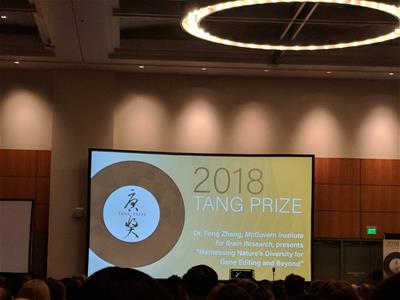 CRISPR-Cas9. Even if you are a researcher who is not currently using this gene editing technique, unless you have been hiding under a rock (and no, hiding in the lab doesn’t count) there is practically no way you have been able to avoid hearing about its existence. And if you have heard of CRISPR -Cas9, the name Feng Zhang might have come up as well. That’s because Dr. Zhang, along with Emmanuelle Charpentier and Jennifer Doudna, have been key figures in what has been referred to as the “CRISPR revolution” for their work on this ground-breaking genome editing technique.
CRISPR-Cas9. Even if you are a researcher who is not currently using this gene editing technique, unless you have been hiding under a rock (and no, hiding in the lab doesn’t count) there is practically no way you have been able to avoid hearing about its existence. And if you have heard of CRISPR -Cas9, the name Feng Zhang might have come up as well. That’s because Dr. Zhang, along with Emmanuelle Charpentier and Jennifer Doudna, have been key figures in what has been referred to as the “CRISPR revolution” for their work on this ground-breaking genome editing technique.
Dr. Zhang’s lecture began by pointing out how, although we mostly associate genetic mutations in humans to be harmful, beneficial mutations exist as well, so why not try to harness this idea to improve clinical outcomes in various disease processes. It continued with an explanation of the origins of CRISPR-Cas9, and it particularly impressive to have the concept of this gene editing technique explained by one of the people who created it, which he did so flawlessly, as one would expect, and even had a video animation of the entire process to make it more accessible to everyone.
During the latter part of his talk, he focused on expanding gene editing by exploring bacterial diversity to aid in development of novel biotechnology. Cas9 had previously been the only member that fell under Class 2 in the CRISPR classification, but given that Class 1 had multiple categories, they set out to see if there were any other potential categories for Class 2. They discovered that there was an additional DNA targeting system, Cas12, and one RNA guided system, Cas13. They found that Cas13 can be reprogrammed using a single RNA guide to cleave target mRNAs in vivo, and that a dead variant of it, dCas13 can be created by mutating the RNase domain. This dCas13 exhibits some collateral activity in vitro, where upon recognition of RNA, it switches to a non-specific RNase, and can be useful for diagnosing bacterial pathogens and detecting nucleic acids. In fact, they have been able to capitalize on this activity by creating a diagnostic platform that they termed SHERLOCK, which includes fluorescence based readouts, reporter cleavage, and can even be used in lateral flow readouts in situations where this more advanced technology is not available, in order to expedite diagnosis.
It will be exciting to see what the future of this CRISPR-Cas revolution looks like, and it was amazing have been able to listen to this lecture by one of the pioneers in the field.